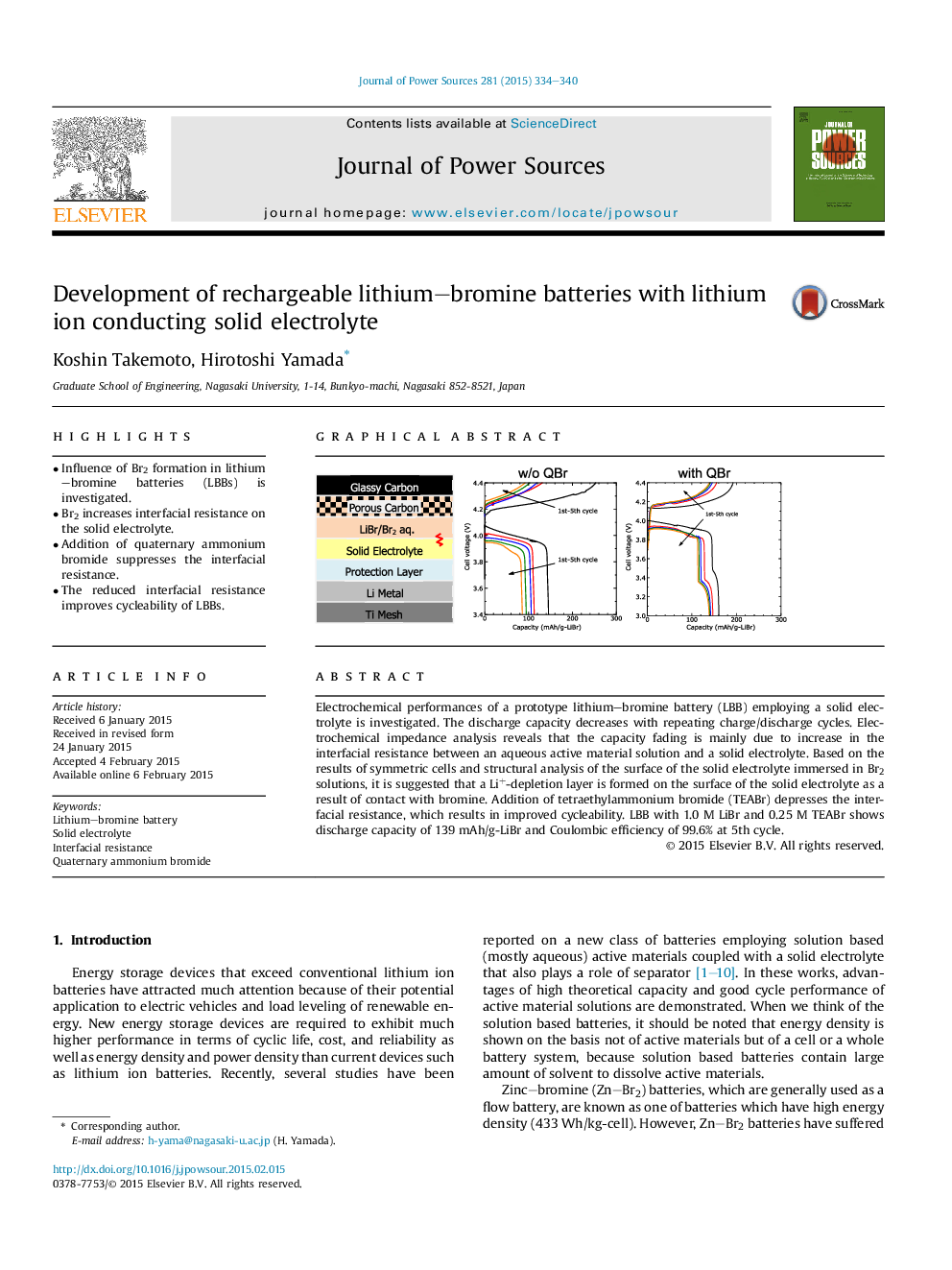| Article ID | Journal | Published Year | Pages | File Type |
|---|---|---|---|---|
| 1286297 | Journal of Power Sources | 2015 | 7 Pages |
•Influence of Br2 formation in lithium–bromine batteries (LBBs) is investigated.•Br2 increases interfacial resistance on the solid electrolyte.•Addition of quaternary ammonium bromide suppresses the interfacial resistance.•The reduced interfacial resistance improves cycleability of LBBs.
Electrochemical performances of a prototype lithium–bromine battery (LBB) employing a solid electrolyte is investigated. The discharge capacity decreases with repeating charge/discharge cycles. Electrochemical impedance analysis reveals that the capacity fading is mainly due to increase in the interfacial resistance between an aqueous active material solution and a solid electrolyte. Based on the results of symmetric cells and structural analysis of the surface of the solid electrolyte immersed in Br2 solutions, it is suggested that a Li+-depletion layer is formed on the surface of the solid electrolyte as a result of contact with bromine. Addition of tetraethylammonium bromide (TEABr) depresses the interfacial resistance, which results in improved cycleability. LBB with 1.0 M LiBr and 0.25 M TEABr shows discharge capacity of 139 mAh/g-LiBr and Coulombic efficiency of 99.6% at 5th cycle.
Graphical abstractFigure optionsDownload full-size imageDownload as PowerPoint slide
